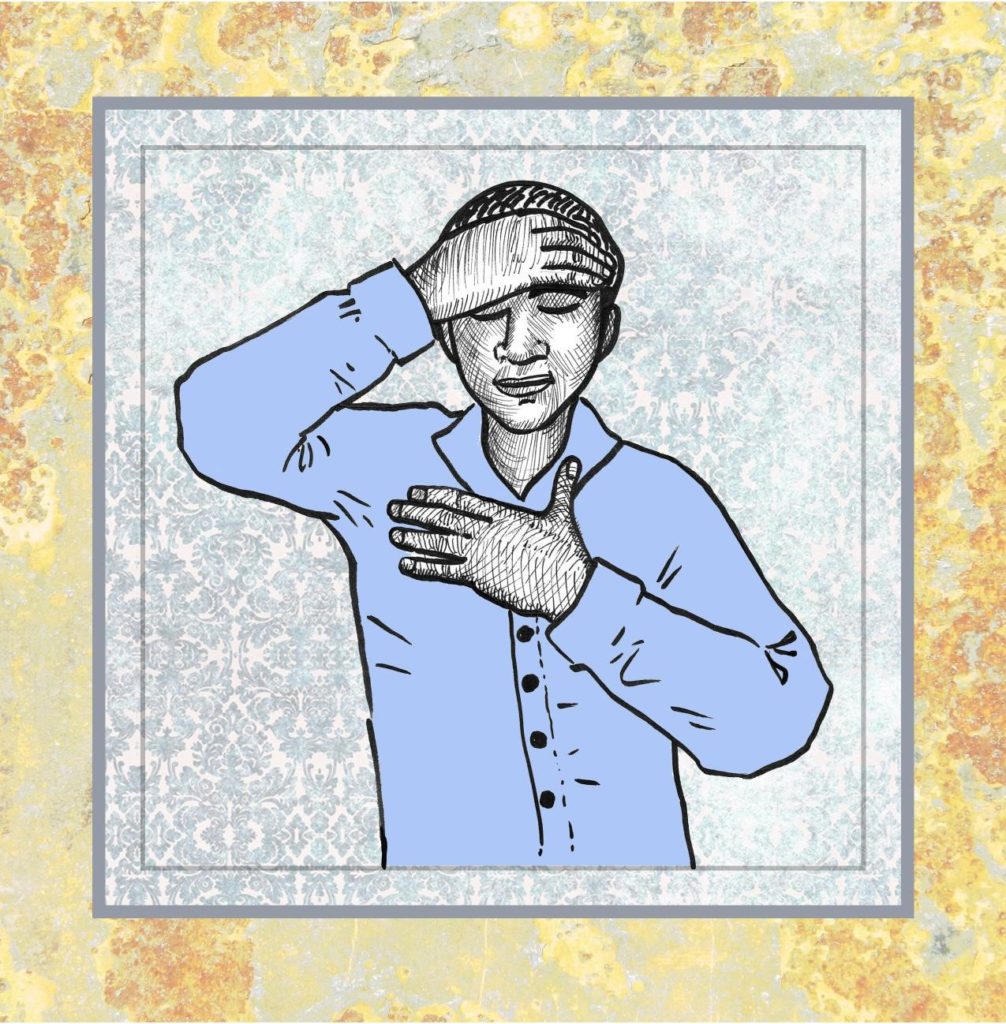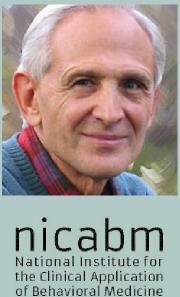Synonyms (Alternate Titles): Inter-palmal Self-Regulation, (inter-palmal = between the palms, self-regulation = regulation of one’s own physiology), Self-Containment Exercise, Self Contact Exercise, Self-Therapeutic Touch, Hand Placement for Self-Induced Homeostasis, Hand Positions for Internal Balance
Healing Mechanisms: Physical Touch, Focused Attention Source: Peter Levine
Comments: It may be difficult for others to understand, but people with PTSD can suffer extreme states of terror, hyperarousal, immobility, nervousness, internal chaos, mental chaos and overwhelm that they simply cannot figure out how to escape. This exercise is an “escape,” a road out.
Goal: The goal of this exercise is to calm the nervous system, bring the Self back into the body, develop more body awareness, and train one’s own nervous system to remember what normal is like. As with the Self-Hug exercise, the goal of this one is also to feel the body as container and get a sense of having boundaries. Also, we can use these exercises to develop self-regulation; we can begin to feel skilled and empowered to change the physiological and emotional states we find ourselves in.
Instructions:
STEP 1
You may have your eyes opened or closed, whatever feels most comfortable for you.
You may lie down or be seated. Get into a comfortable position. Place one hand on your forehead.
If you are laying down, you may place 3 pillows to one side so you can relax your arm onto the pillows as you rest your hand on your forehead.
Place the other hand on your heart.

Method 1 – Feeling the Between Space
Gently place your attention on the area between your two hands, the area inside yourself between your head and heart.
Remain that way until you feel a shift.
You may have to wait a long time, so be patient. Peter Levine instructs us:
“Just feel what goes on between the hands. Sometimes they will feel an energy flow or a change in temperature or a feeling… I just ask them just to keep their hands there, it could be a few moments, or 5 or 10 minutes, until they feel some kind of shift.”
Method 2 – Feeling The Outside and Then The Inside
Method 2 is a way to become more aware of various different sensations happening during this exercise. When you place your attention on specific areas it deepens perception of sensations in those areas.
First, pay attention to the hand that is on your forehead. Feel what the hand feels like, inside and on the surface. For example, is it relaxed, tense, warm, tingling? Feel what the hand feels when it’s touching your forehead – does the hand feel that the forehead feels hard? Warm? Tingling? What is it like for the hand to feel the forehead? Simply be with the hand; gently rest your focused attention on it for a little while.
Now feel what the second hand on the heart feels – how does that hand feel? Heavy, tense, relaxed, cool on top? What does it sense when on the heart? Does it feel warm, energized, tingly? Be with that hand for a little bit.
Now we are going to switch and go inside the body.
Feel the forehead. What sensations are inside the forehead? How does the forehead sense the hand sitting on it? Does it feel some weight, warmth, comfort? Sometimes there are no words for what you sense. It’s OK. Just be with the sensations as they shift and change for a while, even if you can’t describe them.
Now feel inside the heart/chest area. What sensations are in there? Maybe a little tension or relaxation? You may even sense some emotions or colors or shapes or qualities, like slow wave motion or jagged textures or yellow or blue. Maybe a fog or cloud. What does the chest feel with the hand sitting on top of it? Does it feel a little pressure in that area, some weight? Perhaps some warmth? Just sit with it for a while. Be with the heart for a while.
Was there any difference sensing the part of the body doing the touching – the hands – and the parts of body receiving the touch – the body?
Did you notice any difference between the two hands?
Did you notice any difference between the head and the heart?
At first pinpointing sensations in specific places that are near each other can feel confusing, but it becomes clearer pretty fast if you practice it a few times.
You can do these in any order that suits you, for example you may try: top hand, forehead, bottom hand, heart.
STEP 2
Take the hand that is on your forehead and place it onto your belly.
Repeat as in STEP 1. Pay attention to inside your body, to any feelings between the hands or sensations where the hands are laying. Wait until there is a shift.
Peter Levine:
“Then take the upper hand and put it on the belly. And again just wait until there is some shift, until there is some flow, and sometimes people, if they are unable to sleep or they are afraid, they will have nightmares. If they do simple things like that, they will fall into sleep much more easily.”
If you want to go deeper into the sensations, you may do Method 2.

Congratulations!
You have just taken a step to nurture yourself and help sooth your trauma related symptoms.
Observations of the exercise:
When I began to do this exercise, most of the time the first shift occurred as a spontaneous deep breath after which my breathing would change to a deeper, slower rhythm and my muscles would relax. Now that I have been doing the exercise for a few months, the shift is more subtle and gradual as if entering the space of the body in a deeper way.
It still sometimes takes a very long time to feel a shift. For me it seems to depend on how much chaos my nervous system is at the time. If the chaos is very high, it will take longer.
On only one occasion the exercise did not work because my system was in too much turmoil to calm.
If what you read really strikes home and you want to
talk to someone, I would love to speak with you!
Let me help by clicking here.
If you would like to learn more about How I Can Help You! Please do so.
Don’t suffer alone!
Sources: |
Peter Levine website: www.traumahealing.org NICABM (National Institute for the Clinical Application of Behavioral Medicine) Webinar “Creating Safety in Practice: How the Right Tools Can Speed Healing and Reduce Symptoms for Even the Most Traumatized Clients” with Ruth Buc-zynski, PhD and Peter Levine, PhD (2013) website: www.nicabm.com |